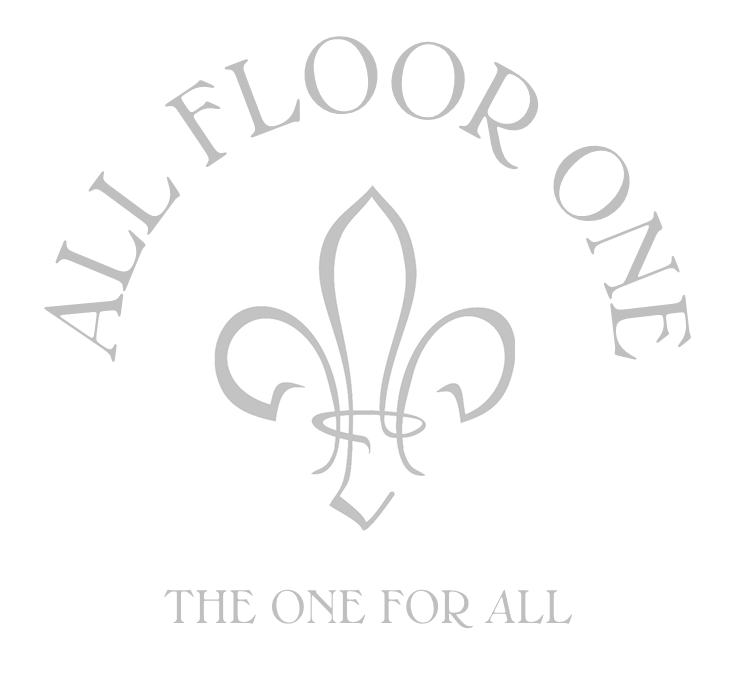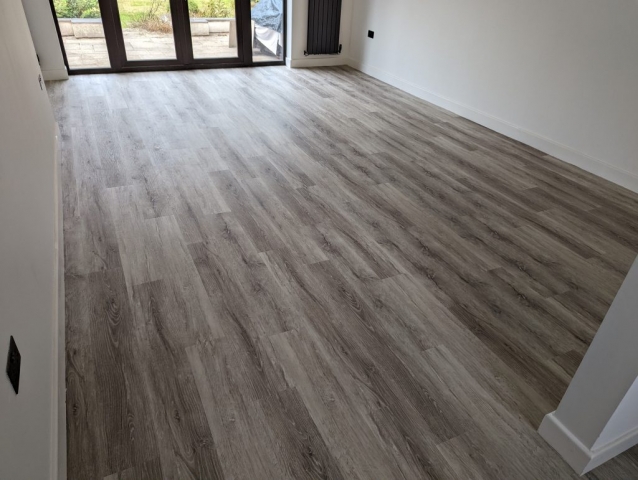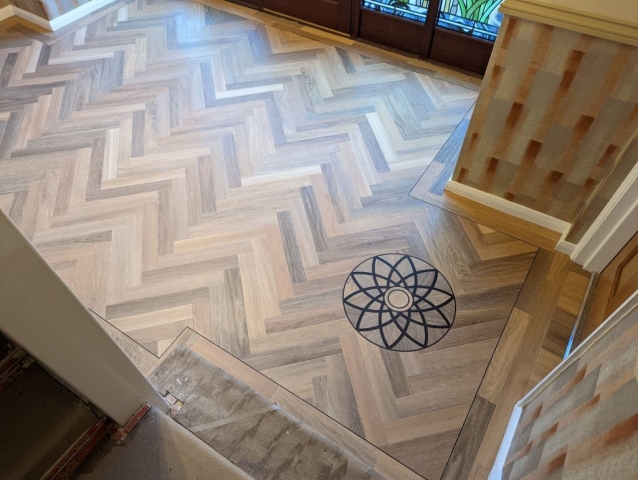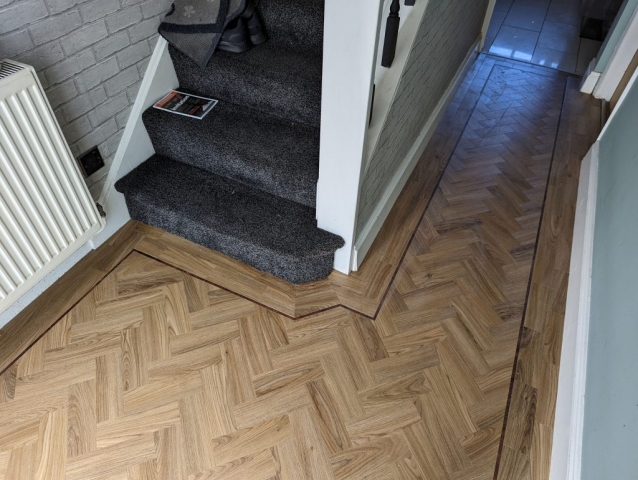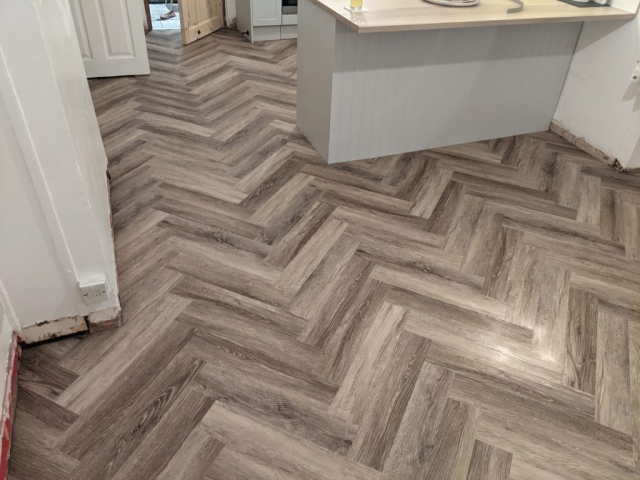Luxury Vinyl Tiles (LVT)
LVT stands for luxury Vinyl tile. Think hardwearing vinyl cut into planks or tiles instead of on a roll. LVT comes in a few different types but essentially these can be categorised into click, looselay or fully bonded/dryback.
Looselay LVT
I only know of one company producing a looselay LVT and that’s Karndean. Its thicker and heavier than a normal LVT. It holds tight to the floor, without being fully glued, with a combination of weight, a special friction grip backing and, in most cases, a tackifier. When this product was first released it was claimed it could go over almost any subfloor but from experience we have found it essentially needs the same level of preparation work as a fully bonded LVT. The Key advantage to this product is it can be lifted and relayed with ease, no damage to the product or the subfloor, making it ideal for commercial environments.
Fully bonded or dryback LVT
Fully bonded or dryback LVT is the classic LVT product. It’s a basic piece of hard wearing vinyl cut into a plank, tile, block or other shape. These can have a range of patterns printed on the top to look like near any substance the manufacturer wants to imitate: wood, ceramic, stone, metal, traditional minton floors and even just a variety of patterns. These planks or tiles are water resistant and extremely hardwearing, unlikely to scratch or scuff under normal circumstances, and even if they do a distinct advantage is one tile can be replaced without disturbing the whole floor! They feel warm underfoot compared to ceramics and they’re a lot softer to the touch.
Dryback is a more versatile product than almost any other flooring type in that a variety of patterns and laying styles can be achieved: straight lay plank, bordered straight plank, 45 degrees, Bordered with a 45 degree field, herringbone, bordered herringbone, basketweave, full plank herringbone, Chevron, square tile, brickbond tile, diamond tile and many more variations can be achieved with the introduction of feature/grout strips or motifs.
Click LVT
As the name suggests this is the same hardwearing top layer on a bottom layer with a built in click mechanism. Often these floors also have a built in underlay but some of the traditional basic click LVTs require a separate underlay. Again they can replicate wood plank, stone and ceramic tile or even herringbone and chevron, but not with the exact same versatility of fully bonded LVT. These floors are floated over the subfloor and need an expansion gap and beading fitting. The subfloor doesn’t quite need the same level of prep but its not a case of they’ll go over anything as some floor fitters would suggest.
Standard click LVT is all vinyl, it generally is the thinnest of the types of click flooring, sometimes these have fibreglass woven through them. Solid core LVT are similar but have a solid core layered into the. The Cores can be made of different materials: WPC floors have a wood plastic composite core and SPC flooring has a stone poly-composite core. All of these can either come with no built in underlay, a foam built in underlay or a cork backing.
